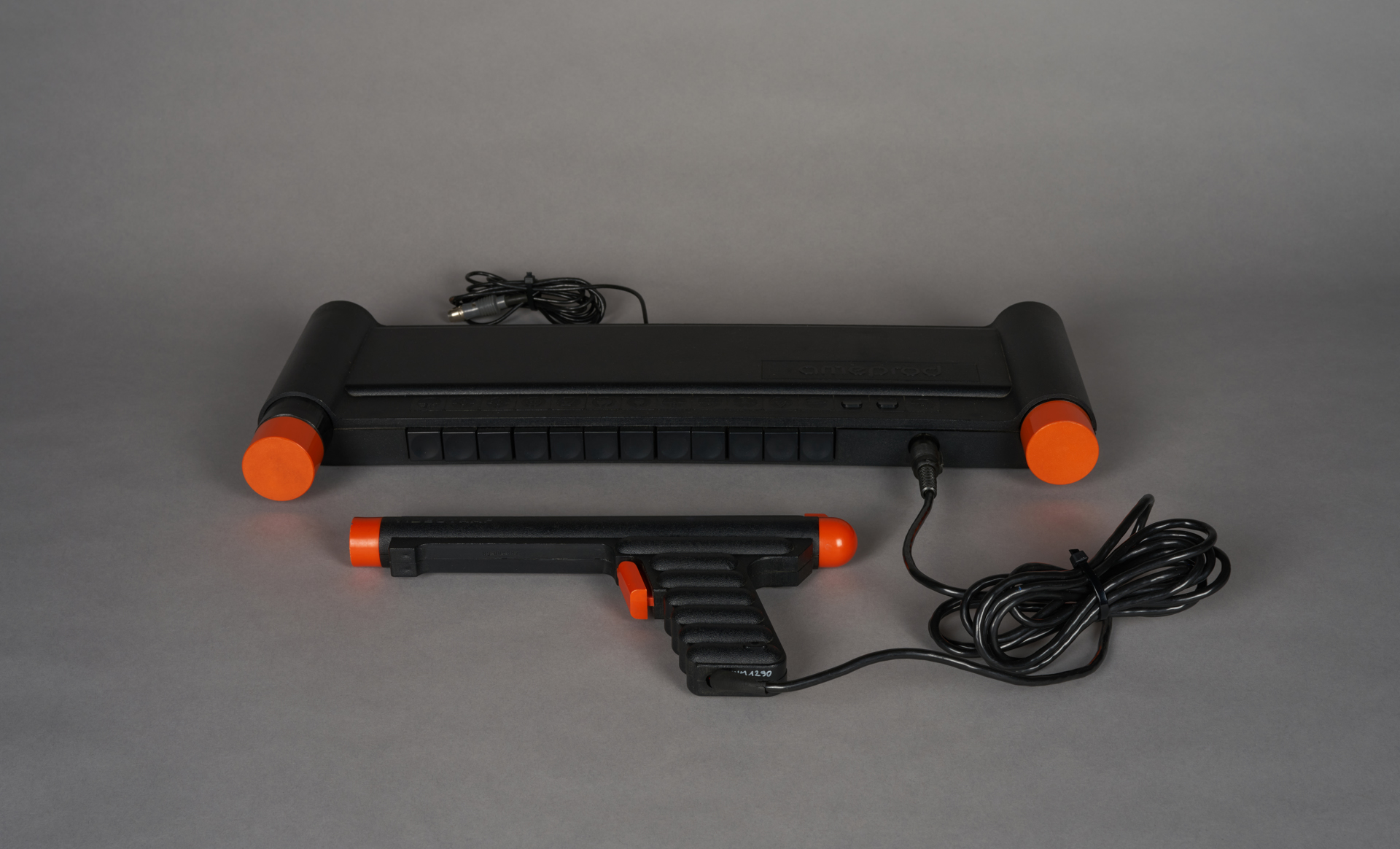
TVG-10 game console
Wrocławskie Zakłady Elektroniczne MERA-ELWRO, Ameprod, Hadyński, Benedykt Jan, Możejko, Wiktor, / 1982Creator
Wrocławskie Zakłady Elektroniczne MERA-ELWRO, Ameprod, Hadyński, Benedykt Jan, Możejko, Wiktor
Time and place of creation
Time:
1982
The TVG-10 gaming console was designed in 1978 by Wrocławskie Zakłady Elektroniczne Elwro, and mass production began a year later, when the device was also launched on the market. The design concept of the device was prepared by Benedykt Jan Hadyński – the head of the industrial design studio of the enterprise at the time.
The TVG-10 is a video game for children and adults that develops reaction speed, coordination, concentration, precision, and perceptiveness. The peak popularity of such games was in the 1980s. Their widespread promotion in Poland was begun by the Mera Elwro enterprise (operating in 1959-1993), which developed the TVG-10 console on the basis of the improved AY-3-8500 chip from General Instrument. It was both the first and the only Polish videogame manufactured in communist Poland. It is a copy of the Pong game, popular at the time, produced by Atari. As soon as it appeared, the TVG-10 enjoyed significant interest but unfortunately the high price and the low number of units manufactured made it difficult to buy. Due to the lack of dollars with which the production enterprises could pay suppliers, the use of the imported integrated circuit implemented in the design proved to be an additional problem and caused production bottlenecks. Due to the lack of hard currency with which to import the component, in 1981 the decision was made to transfer the production rights to the Ameprod Polish diaspora/Foreign Enterprise in Poznań for a fee. It had easier access to foreign technologies and, until production ended in 1984, it marketed about a 100,000 units of the console. In the 1980s the first personal computers began to appear in Poland, like all over the world, which reduced the interest in consoles.
To use the TVG-10 it was necessary to connect the console to a standard television receiver with UHF band reception. Each of the 10 games available in the device is accompanied by simplified, black-and-white imaging and basic sound effects. The console starts working when it is connected to the TV receiver’s antenna output, then the game was selected by pressing one of the buttons in the front panel (the type of game is signified by a simplified icon) and turning the TV set’s tuning dial until a clear image is achieved. The game is controlled using two cylindrical sticks that slide out of pockets on either end of the console, each with an orange button on top. Over time, Wiktor Możejko designed a light gun called the Videotraf for more complicated arcade games. The controller allows shooting at objects moving on the screen.
Authors: Piotr Turowski, Filip Wróblewski
TVG-10 game console
Wrocławskie Zakłady Elektroniczne MERA-ELWRO, Ameprod, Hadyński, Benedykt Jan, Możejko, Wiktor, / 1982Creator
Wrocławskie Zakłady Elektroniczne MERA-ELWRO, Ameprod, Hadyński, Benedykt Jan, Możejko, Wiktor
Time and place of creation
Time:
1982











